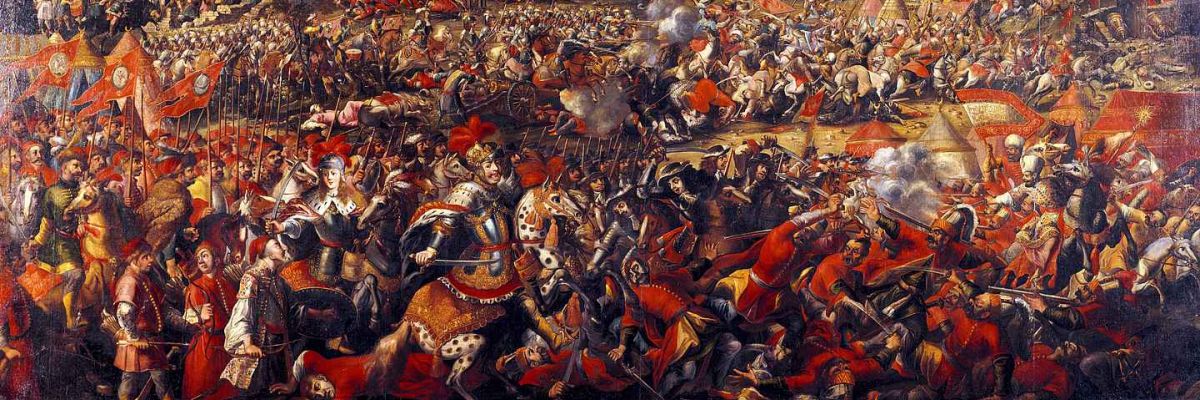
September 12 is the memorial of the Most Holy Name of Mary, a liturgical celebration that probably gives many Catholics pause. Honoring the Blessed Mother in the liturgy is nothing new or unique in the Church, but many may ask, why this feast on this day?
The answer lies in a pivotal battle fought in the late seventeenth century between the Cross and the Crescent at the “Gateway to Europe.” A little more than a hundred years after the great Christian victory at Lepanto (October 7, 1571) where Don John’s Holy League warriors prayed a rosary the night before their miraculous victory (remembered liturgically as the Memorial of Our Lady of the Rosary), Christendom was once more severely threatened by the Ottoman horde. The Turks had solidified their hold on the Balkans since the time of Lepanto and were gaining strength for an attack on imperial Hapsburg territory.
Ottoman treachery
Holy Roman Emperor Leopold I (r. 1658–1705) pursued a diplomatic policy of appeasement with the Ottomans, because he was more concerned about his belligerent French neighbor, King Louis XIV. Some of Leopold’s advisors believed the once-mighty Ottoman military was weak and ineffective compared to the strong and large standing army of the Sun King.
Leopold entered into a peace treaty with the Ottoman Turks in 1665 but, fearing the Ottomans might break the treaty, the emperor also entered into defense treaties with other European nations; including Poland, to come to his aid should the Turks invade. The treaty with the Ottomans was set to expire in 1684 but, unbeknownst to Leopold, the Ottomans had decided a year earlier to break the treaty and invade Austria.
At a meeting on August 6, 1682, advisors to the Ottoman sultan, Mehmet IV (r. 1648–1687), persuaded him that the time was right to invade Christian territory. The invasion would commence in 1683 with an army of 100,000 men under the command of the grand vizier Kara Mustapha (1634–1683). Although he was a veteran of numerous military campaigns, Kara Mustapha was not beloved by his troops, since he was known to accept large casualties to accomplish the mission. He lived ostentatiously, with thousands of concubines in his harem and numerous slaves and eunuchs to tend to his needs. He also despised Christians and was looking forward to the campaign.
Kara Mustapha was overly confident of victory and believed his army would capture not only Vienna but even Rome, where he bragged he would stable his horses in St. Peter’s basilica. The Ottoman army crossed the frontier in late June 1683, rampaging and pillaging as they marched.
Polish heroes ride out
As soon as news reached Leopold that the Turks were on the move, he reached out to his allies and begged them to come to the aid of Vienna. Jan Sobieski (r. 1676–1696), the King of Poland and a devout Catholic, responded to his treaty obligations and raised a relief army. He left Warsaw with an army of 20,000 men, mostly cavalry, on the way to Cracow, where the rest of his troops were ordered to assemble.
Along the march, Sobieski stopped to pray at the shrine of Our Lady of Czestochowa. Entrusting the success of his military efforts to the intercession of the Blessed Mother, he began his army’s march to Vienna on the Solemnity of the Assumption of the Blessed Virgin Mary, August 15, 1683. His forces were buoyed by the knowledge that Pope Innocent XI (r. 1676–1689) had granted the Crusading plenary indulgence to all who fought for the defense and relief of Vienna.
The Ottoman army arrived at the city on July 14 and, as was their tradition and custom, arranged their camp around the city in the shape of a crescent. The Viennese defenders fought bravely for a month, but by the end of August and into early September food was scarce in the city and disease was rampant. It was only a matter of time before the Ottomans broke into the city.
The undoing of the Turks
The allied relief army led by Sobieski arrived near Vienna on September 9. Surprisingly, the Turks had not secured the approaches to the city; in fact, they did not even post sentries to warn Kara Mustapha of the approach of the relief army. It was a foolish and deadly mistake by the grand vizier, who had focused solely on the siege of the city. Sobieski developed his battle plan and prepared to attack the Ottomans using the high ground of the Kahlenberg Mountain on the outskirts of Vienna.
The battle began on September 11, and the fighting was intense. The unseasonal heat of the day exhausted soldiers on both sides so that by midday the fighting stopped temporarily. When it resumed, Sobieski sensed the Ottoman line was weak, and he unleashed his famed Winged Hussars for a cavalry charge that demolished Turkish resistance. Polish troops were first into the city and were greeted with cheers and prayers of thanksgiving by the beleaguered defenders.
Sobieski sent a victory message to Pope Innocent XI, who credited the Christian victory over the Ottomans and the salvation of the city to the intercession of the Blessed Mother. As a result, the pope established the Feast of the Most Holy Name of Mary, first celebrated in Spain in the sixteenth century, as a universal memorial for the Church in thanksgiving for the victory at Vienna.
The Ottoman campaign to capture the gateway to Europe and destroy Christendom was a risky operation. Its success would have ensured Ottoman hegemony over Eastern Europe and opened up the approaches to Western Europe. Its failure would begin the decline and ruin of the Islamic empire. Through the intercession of the Blessed Mother and the military genius of the Polish king Jan Sobieski, Christendom was saved.



